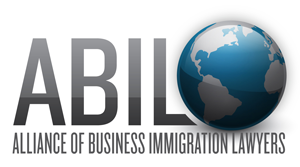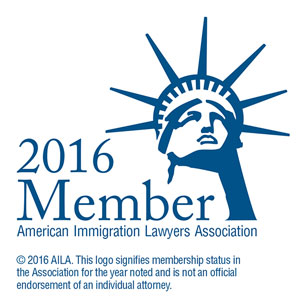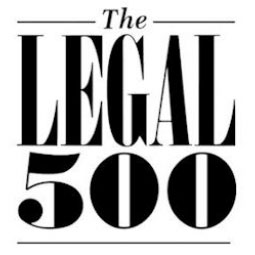AC21 Trap for H-1B Workers Caught in the Green Card Backlogs and Who Have Changed Jobs
By Cyrus D. Mehta and Manjeeta Chowdhary*
H-1B status is typically limited to six years in up to three-year increments. One statutory exception is § 104(c) of the American Competitiveness in the 21st Century Act (AC21) (8 CFR § 214.2(h)(13)(iii)(E)), which permits three-year extensions for workers with an approved I-140 petition while no immigrant visa number is available. The worker in H-1B status may change employers and continue to obtain AC21 § 104(c) three-year extensions so long as an approved I-140 remains in place and no immigrant visa number is available. This is the prevailing situation for many EB-2/EB-3 workers in backlogged categories—often for years—while they lawfully maintain status through successive § 104(c) extensions and employers. However, once the priority date becomes current, § 104(c) can no longer be used to seek extensions because a visa number is now available.
Another statutory exception, AC21 § 106(a) (8 CFR § 214.2(h)(13)(iii)(D)) authorizes one-year H-1B extensions when a PERM labor certification or I-140 immigrant petition has been filed at least one year before the final of the 6th or final year in H-1B status. The worker who is ineligible under AC21 §104(c) can rely on this provision, § 106(a), as the underlying labor certification supporting the I-140 petition was filed long before the end of the sixth year.
The problem arises when an H-1B worker who has changed employers finds that neither provision fits. Once a visa number becomes available, § 104(c) no longer supports three-year extensions by definition (its protection ends when a visa is immediately available), and the H-1B worker typically cannot adjust status through the I-140 petition of the prior employer because the underlying job offer no longer exists. At the same time, § 106(a)—which permits a one-year extension as the underlying labor certification was filed more than one year prior to the sixth year — may also be unavailable if the priority date has become current and the H-1B worker has not yet filed for adjustment of status or sought an immigrant visa within one year of visa availability.
This is the AC21 trap for H-1B workers who have changed jobs. At the moment a visa number becomes available, the H-1B worker cannot seek a three-year extension and may also not be able to seek a one-year extension as they cannot use the prior employer’s I-140 petition to adjust status and thus extend H-1B status under § 106(a).
8 CFR § 214.2(h)(13)(iii)(D)(10) provides:
An alien is ineligible for the lengthy adjudication delay exemption under paragraph (h)(13)(iii)(D) of this section if the alien is the beneficiary of an approved petition under section 203(b) of the Act and fails to file an adjustment of status application or apply for an immigrant visa within 1 year of an immigrant visa being authorized for issuance based on his or her preference category and country of chargeability. If the accrual of such 1-year period is interrupted by the unavailability of an immigrant visa, a new 1-year period shall be afforded when an immigrant visa again becomes immediately available. USCIS may excuse a failure to file in its discretion if the alien establishes that the failure to apply was due to circumstances beyond his or her control. The limitations described in this paragraph apply to any approved immigrant visa petition under section 203(b) of the Act, including petitions withdrawn by the petitioner or those filed by a petitioner whose business terminates 180 days or more after approval.
This means that if an individual’s I-140 immigrant petition has been approved and a visa number becomes available for that person’s preference category and country of chargeability, one has only one year to take the next step, either file an application for adjustment of status while in the United States, or apply for an immigrant visa through consular processing abroad. If one fails to apply within that one-year period, one becomes ineligible for further H-1B extensions beyond the six-year limit under the “lengthy adjudication delay” rule. However, USCIS may, in its discretion, excuse a failure to apply within that one-year period if one establishes that the failure was due to circumstances beyond one’s control.
Thus, 8 CFR § 214.2(h)(13)(iii)(D)(10) provides an exception if the H-1B worker can demonstrate that the failure to file was due to circumstances beyond his or her control. When a H-1B worker changes employers and cannot file for adjustment of status because the new employer has not initiated PERM labor certification or a pending PERM remains unapproved, he or she may be able to establish “that the failure to apply was due to circumstances beyond his or her control.” In seeking a favorable exercise of discretion, the H-1B worker would explain that it was impossible to apply for adjustment of status within the one-year period because the new employer’s PERM labor certification was still pending, and an adjustment of status can only be filed once the labor certification is approved—followed by the concurrent filing of an I-140 and adjustment of status while recapturing the priority date from the prior employer’s approved I-140. It can also be further argued that a PERM labor certification can take between 18 to 24 months to get approved and this can also be used to demonstrate that the failure to file for adjustment of status was beyond the control of the alien. However, the USCIS’s decision in such cases is discretionary, and approval is not guaranteed. Of course, the H-1B worker can also extend H-1B status based on recaptured H-1B time spent outside the US before invoking § 106(a). In the meantime, if the new employer’s PERM labor certification comes through, the worker will be eligible to file an adjustment of status, thus facilitating the extension under § 106(a).
The AC21 framework was designed to preserve status for professionals navigating the lengthy backlogs in the employment-based green-card process. Yet, in today’s fluid labor market, § 104(c) and § 106(a) do not always align with career mobility, especially with those who are caught in the lengthy green card backlogs. 8 CFR § 214.2(h)(13)(iii)(D)(10) serves as a warning that timely action must follow or eligibility for further § 106(a) one-year extensions may lapse, thus causing the H-1B worker to fall into the AC1 trap where they can neither rely on § 104(c) nor § 106(a). An H-1B worker who has changed jobs and obtained a three-year extension under § 104(c) cannot hope to indefinitely seek three-year H-1B extensions. They must have the new employer to timely start a new labor certification so that they can apply for adjustment of status within one year of the visa becoming available.
*Manjeeta Chowdhary is an Associate at Cyrus D. Mehta & Partners PLLC.





Leave a Reply
Want to join the discussion?Feel free to contribute!